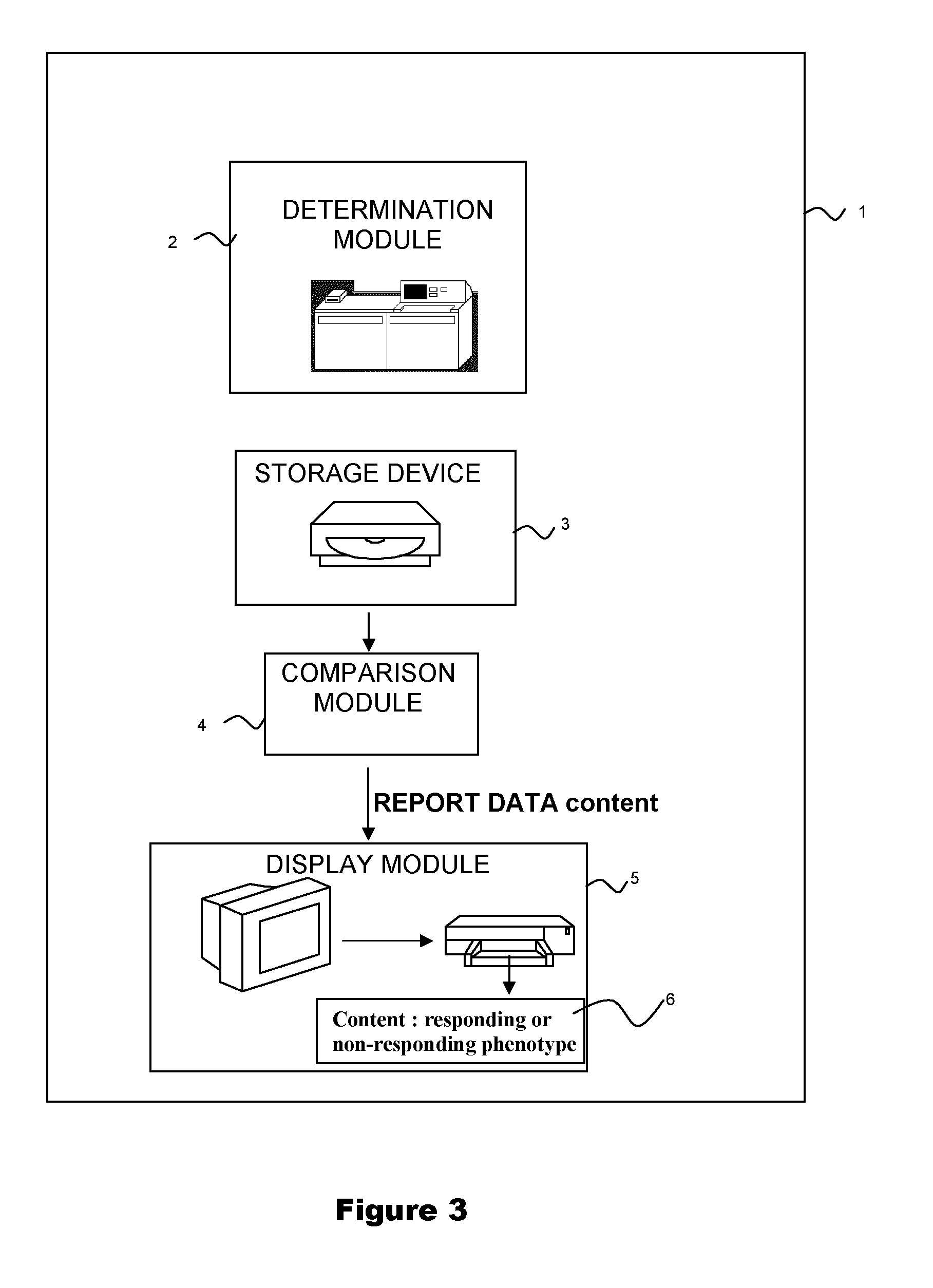Genes and genes combinations based on gene mknk1 predictive of early response or non response of subjects suffering from inflammatory disease to cytokine targeting drugs (CYTD) or Anti-inflammatory biological drugs
a technology of mknk1 and gene combination, applied in combinational chemistry, biochemistry apparatus and processes, chemical libraries, etc., can solve the problems of not being prospectively planned for most microarray studies, no method of identifying patient suitability for various biologics, and several pitfalls experienced using this multi-stage and relatively expensive technology
- Summary
- Abstract
- Description
- Claims
- Application Information
AI Technical Summary
Benefits of technology
Problems solved by technology
Method used
Image
Examples
example 1
Identification of Candidate Genes by Meta-Analysis of Microarray Data
[0457]Materials and Methods
[0458]In this example, the materials and methodologies used in the subsequent examples are described.
[0459]Data Identification and Data Extraction: Studies were selected on the basis that they had been performed on RA patients naive to biologics who had started therapy with Infliximab and measurement of their response to treatment was available at 14 or 22 weeks. Large scale gene expression information had to be available at baseline (prior to treatment). Following the steps described in Ramasamy et al. (10), we identified four six studies that matched our research criteria: Lequerré et al. (6), Sekiguchi et al. (7), Bienkowska et al. (9), and Julià et al. (8), Tanino et al. (36) and van Baarsen et al. (37). The expression data, the phenotypes and the annotation data were all downloaded from GEO (GSE3592, GSE8350, GSE12051 and, GSE15258, GSE20690 and GSE19821 respectively).
[0460]All six s...
example 2
Validation of Candidate Genes and Signatures
[0470]For the 45 genes identified in Example 1, probes specific to Taqman assays were ordered from APPLIED BIOSYSTEMS based on APPLIED's inventoried probes or were designed internally using standard software. After our internal quality control steps 35 out of the 45 genes of the present invention were tested on 40 RA samples. The 40 samples used for the qCPR represent a subset of the original samples used for microarray analysis in the study of Julia et al. The delatadeltaCT method was used to measure gene expression levels after carefully selecting reference genes internally. The following statistical analyses have been performed: Identification of individually differentially expressed genes between the two groups of responders versus non responders (Table 5). The selection criteria used was a significant t-test is p-value<0.05. The following 8 genes were found to be significant: MKNK1, PRF1, TBX21, TGFBR3, IFNGR2, FYN, IL1B and CFLAR.
TAB...
example 3
Genes Equivalent to the Candidate 8* Genes
[0472]Genes rarely operate individually and thus genes whose expression correlate to other genes can easily be replaced to achieve similar discriminatory performances. To that effect we identified the genes that most correlate to the eight genes from our claim. Correlation analysis is first based on two genomewide datasets to ensure that most genes of the genome are evaluated: the 44 microarray chips of Julia et al. as well as the entire set of microarray chips of Bienkowska et al. (86 chips including other anti-TNFs). The 20 most positively correlated to each of the eight genes are displayed on FIGS. 1 and 2 respectively. They are also indicated in following Tables 7 to 8.
TABLE 7List of genes that positively correlate to 7 candidate genes based on the data of Julia et al.MKNK1PRF1TBX21IFNGR2FYNIL1BCFLARSOD2GZMBHDAC8ACSL1DDX56ADMCASP9TMEM8GPR56CEP70HEXBFLJ21438CEBPBRBP7AQP9ALKBH5TMEM161BTM6SF1CD81AXUD1SNAP23ACSL1R3HDM2CPEB4FAM49ANDUFS8GADD45...
PUM
 Login to View More
Login to View More Abstract
Description
Claims
Application Information
 Login to View More
Login to View More - R&D
- Intellectual Property
- Life Sciences
- Materials
- Tech Scout
- Unparalleled Data Quality
- Higher Quality Content
- 60% Fewer Hallucinations
Browse by: Latest US Patents, China's latest patents, Technical Efficacy Thesaurus, Application Domain, Technology Topic, Popular Technical Reports.
© 2025 PatSnap. All rights reserved.Legal|Privacy policy|Modern Slavery Act Transparency Statement|Sitemap|About US| Contact US: help@patsnap.com



